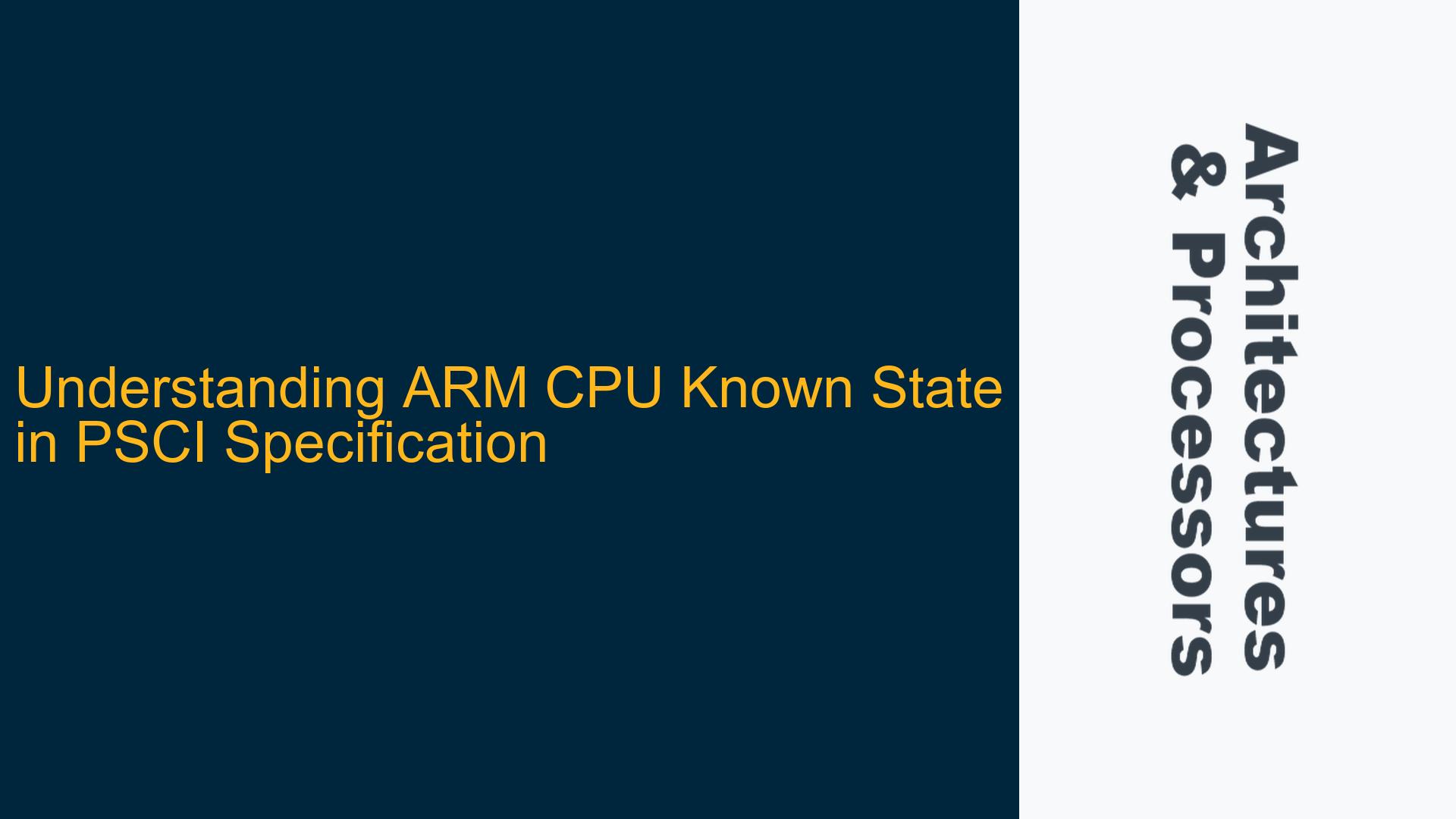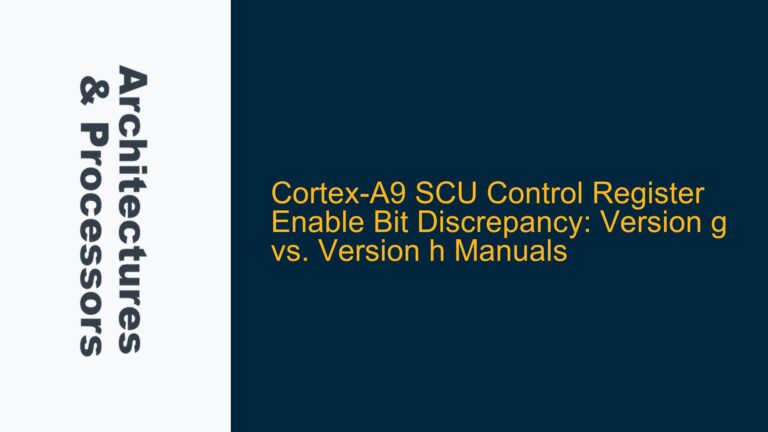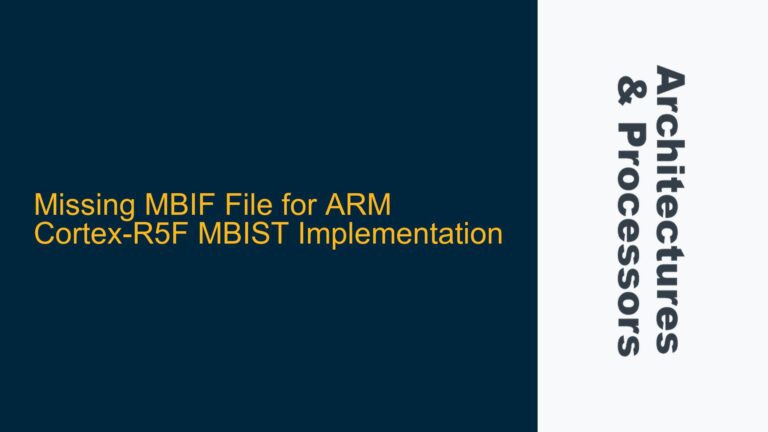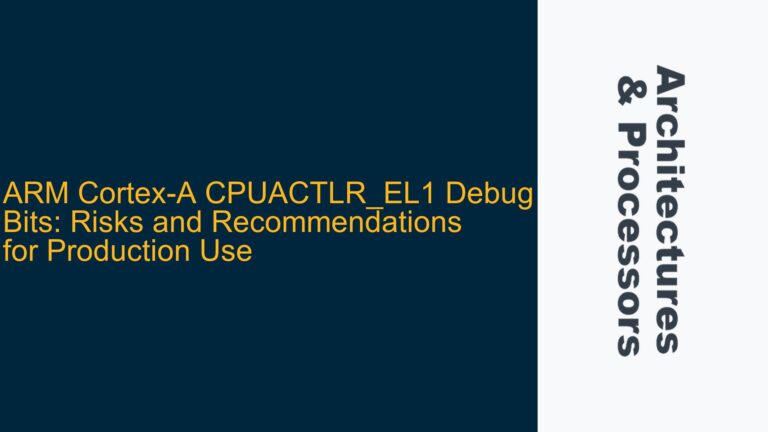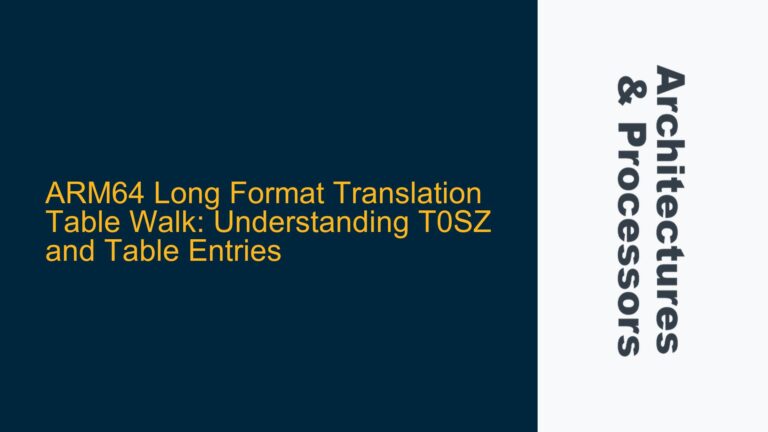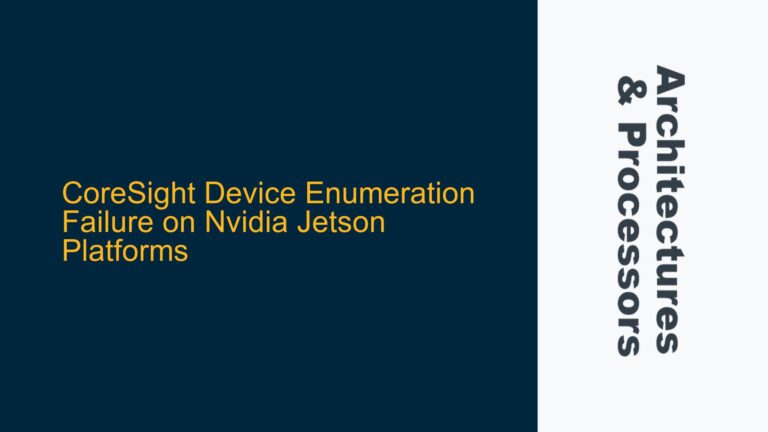ARM Cortex CPU Known State in Power State Coordination Interface (PSCI)
The concept of a "known state" in ARM architectures, particularly within the context of the Power State Coordination Interface (PSCI), is a critical aspect of system power management and reliability. The PSCI specification defines a set of standard interfaces for power management in ARM-based systems, enabling software to control the power states of CPUs and the system as a whole. A "known state" refers to a well-defined, predictable condition of the CPU and system resources that ensures consistent behavior during power state transitions, such as powering down or resetting the system.
In the PSCI context, placing a CPU in a known state is a prerequisite for certain operations, such as invoking the SYSTEM_OFF or CPU_OFF functions. These operations require that all cores are in a state where their execution context, cache, and memory coherency are properly managed to avoid undefined behavior or data corruption. For example, before calling SYSTEM_OFF, all cores except the last one must be powered down using CPU_OFF, and the last core must ensure that the system is in a state where a cold boot can be performed safely.
The known state is not explicitly defined in the PSCI specification but is inferred from the requirements of the power management operations. It typically involves ensuring that the CPU’s execution context is saved, caches are flushed, and any pending memory transactions are completed. This ensures that when the system is powered on again, it can resume execution from a well-defined point without encountering inconsistencies or errors.
Memory and Cache Coherency Requirements for Known State
One of the primary challenges in achieving a known state is ensuring memory and cache coherency across all cores. ARM processors, especially those with multiple cores, rely on cache coherency protocols to maintain consistency between the caches of different cores and the main memory. When transitioning to a low-power state or shutting down the system, it is essential to ensure that all cores have a consistent view of memory and that no stale data remains in the caches.
The omission of memory barriers or improper cache management can lead to coherency issues, where one core may have a different view of memory compared to another core or the main memory. This can result in data corruption or undefined behavior when the system resumes operation. For example, if a core writes data to its cache but does not flush it to main memory before entering a low-power state, another core may read stale data when the system powers on again.
To address these issues, the PSCI implementation must ensure that all cores execute the necessary cache maintenance operations and memory barriers before transitioning to a known state. This includes flushing the data cache, invalidating the instruction cache, and ensuring that all memory transactions are complete. Additionally, the implementation must handle any platform-specific coherency requirements, such as managing the snoop control unit (SCU) in multi-core systems.
Implementing Cache Maintenance and Power State Transitions
Achieving a known state requires careful implementation of cache maintenance and power state transitions in the PSCI firmware. The following steps outline the key considerations and best practices for ensuring that the CPU and system are in a known state before invoking power management operations.
First, the firmware must ensure that all cores have completed their current tasks and are ready to enter a low-power state. This involves saving the execution context of each core, including the program counter, stack pointer, and general-purpose registers. The context must be saved to a non-volatile memory location or a region of memory that will not be affected by the power state transition.
Next, the firmware must perform cache maintenance operations to ensure coherency between the caches and main memory. This includes flushing the data cache to write any modified data to main memory and invalidating the instruction cache to remove any stale instructions. The firmware must also execute memory barriers to ensure that all memory transactions are complete before proceeding with the power state transition.
Once the cache and memory coherency requirements are met, the firmware can invoke the appropriate PSCI functions to transition the cores to a low-power state. For example, the CPU_OFF function can be used to power down all cores except the last one, which will invoke the SYSTEM_OFF function to shut down the entire system. The firmware must ensure that the last core remains in a known state until the SYSTEM_OFF operation is complete.
Finally, the firmware must handle any platform-specific requirements for power state transitions, such as configuring the power management controller or handling interrupts that may occur during the transition. The firmware must also ensure that the system can perform a cold boot when powered on again, restoring the execution context and resuming operation from a well-defined point.
By following these steps and adhering to the PSCI specification, firmware developers can ensure that the CPU and system are in a known state before invoking power management operations. This ensures reliable and consistent behavior during power state transitions, preventing data corruption and undefined behavior.
Detailed Analysis of ARM Cortex CPU Known State Requirements
To fully understand the requirements for achieving a known state in ARM Cortex CPUs, it is necessary to delve into the architectural details of the processor and the PSCI specification. The following sections provide a detailed analysis of the key components and considerations involved in placing a CPU in a known state.
Execution Context and Register State
The execution context of a CPU includes the current state of the program counter, stack pointer, and general-purpose registers. When transitioning to a known state, the firmware must save this context to a non-volatile memory location or a region of memory that will not be affected by the power state transition. This ensures that the CPU can resume execution from the same point when powered on again.
The ARM architecture provides several mechanisms for saving and restoring the execution context, including the use of exception handlers and the system control register (SCR). The firmware must ensure that the context is saved in a manner that is consistent with the architecture’s requirements, including handling any platform-specific considerations.
Cache Coherency and Memory Barriers
Cache coherency is a critical aspect of achieving a known state in multi-core ARM systems. The ARM architecture uses a cache coherency protocol, such as the AMBA AXI protocol, to maintain consistency between the caches of different cores and the main memory. When transitioning to a known state, the firmware must ensure that all cores have a consistent view of memory and that no stale data remains in the caches.
Memory barriers are used to enforce the order of memory transactions and ensure that all cores have a consistent view of memory. The ARM architecture provides several types of memory barriers, including data memory barriers (DMB), data synchronization barriers (DSB), and instruction synchronization barriers (ISB). The firmware must use these barriers appropriately to ensure that all memory transactions are complete before proceeding with the power state transition.
Power Management Controller and Platform-Specific Considerations
The power management controller (PMC) is responsible for managing the power states of the CPU and system. The firmware must configure the PMC to ensure that the CPU and system are in a known state before invoking power management operations. This includes setting the appropriate power state, configuring the clock and voltage regulators, and handling any platform-specific requirements.
Platform-specific considerations may include handling interrupts that occur during the power state transition, configuring the snoop control unit (SCU) in multi-core systems, and managing any external devices that may be affected by the power state transition. The firmware must ensure that these considerations are addressed to achieve a known state.
Cold Boot and System Reset
When the system is powered on again, it must perform a cold boot to restore the execution context and resume operation from a well-defined point. The firmware must ensure that the cold boot process is consistent with the architecture’s requirements, including initializing the CPU, configuring the memory and cache, and restoring the execution context.
The cold boot process must also handle any platform-specific considerations, such as configuring the PMC, handling interrupts, and managing any external devices. The firmware must ensure that the system is in a known state before resuming normal operation.
Practical Implementation of Known State in ARM Cortex CPUs
To illustrate the practical implementation of achieving a known state in ARM Cortex CPUs, the following sections provide a step-by-step guide for firmware developers. This guide covers the key steps and considerations involved in placing a CPU in a known state, including saving the execution context, performing cache maintenance, and invoking power management operations.
Step 1: Save Execution Context
The first step in achieving a known state is to save the execution context of the CPU. This includes the program counter, stack pointer, and general-purpose registers. The firmware must save this context to a non-volatile memory location or a region of memory that will not be affected by the power state transition.
The ARM architecture provides several mechanisms for saving the execution context, including the use of exception handlers and the system control register (SCR). The firmware must ensure that the context is saved in a manner that is consistent with the architecture’s requirements, including handling any platform-specific considerations.
Step 2: Perform Cache Maintenance
The next step is to perform cache maintenance operations to ensure coherency between the caches and main memory. This includes flushing the data cache to write any modified data to main memory and invalidating the instruction cache to remove any stale instructions. The firmware must also execute memory barriers to ensure that all memory transactions are complete before proceeding with the power state transition.
The ARM architecture provides several types of cache maintenance operations, including data cache clean and invalidate operations, instruction cache invalidate operations, and memory barriers. The firmware must use these operations appropriately to ensure that all cores have a consistent view of memory.
Step 3: Invoke Power Management Operations
Once the cache and memory coherency requirements are met, the firmware can invoke the appropriate PSCI functions to transition the cores to a low-power state. For example, the CPU_OFF function can be used to power down all cores except the last one, which will invoke the SYSTEM_OFF function to shut down the entire system. The firmware must ensure that the last core remains in a known state until the SYSTEM_OFF operation is complete.
The firmware must also handle any platform-specific requirements for power state transitions, such as configuring the power management controller or handling interrupts that may occur during the transition. The firmware must ensure that the system can perform a cold boot when powered on again, restoring the execution context and resuming operation from a well-defined point.
Step 4: Handle Platform-Specific Considerations
Platform-specific considerations may include handling interrupts that occur during the power state transition, configuring the snoop control unit (SCU) in multi-core systems, and managing any external devices that may be affected by the power state transition. The firmware must ensure that these considerations are addressed to achieve a known state.
For example, in a multi-core system, the firmware must ensure that the SCU is configured to maintain cache coherency between the cores. The firmware must also handle any interrupts that may occur during the power state transition, ensuring that they are properly acknowledged and handled to prevent data corruption or undefined behavior.
Step 5: Perform Cold Boot and System Reset
When the system is powered on again, it must perform a cold boot to restore the execution context and resume operation from a well-defined point. The firmware must ensure that the cold boot process is consistent with the architecture’s requirements, including initializing the CPU, configuring the memory and cache, and restoring the execution context.
The cold boot process must also handle any platform-specific considerations, such as configuring the PMC, handling interrupts, and managing any external devices. The firmware must ensure that the system is in a known state before resuming normal operation.
Conclusion
Achieving a known state in ARM Cortex CPUs is a critical aspect of system power management and reliability. The PSCI specification provides a set of standard interfaces for controlling the power states of CPUs and the system as a whole, but achieving a known state requires careful implementation of cache maintenance, memory barriers, and power state transitions.
By following the steps outlined in this guide, firmware developers can ensure that the CPU and system are in a known state before invoking power management operations. This ensures reliable and consistent behavior during power state transitions, preventing data corruption and undefined behavior.
The key to achieving a known state is understanding the architectural requirements of the ARM Cortex CPU and the PSCI specification, as well as addressing any platform-specific considerations. By adhering to these requirements and best practices, firmware developers can ensure that their systems are reliable, efficient, and capable of performing power state transitions without encountering errors or inconsistencies.
